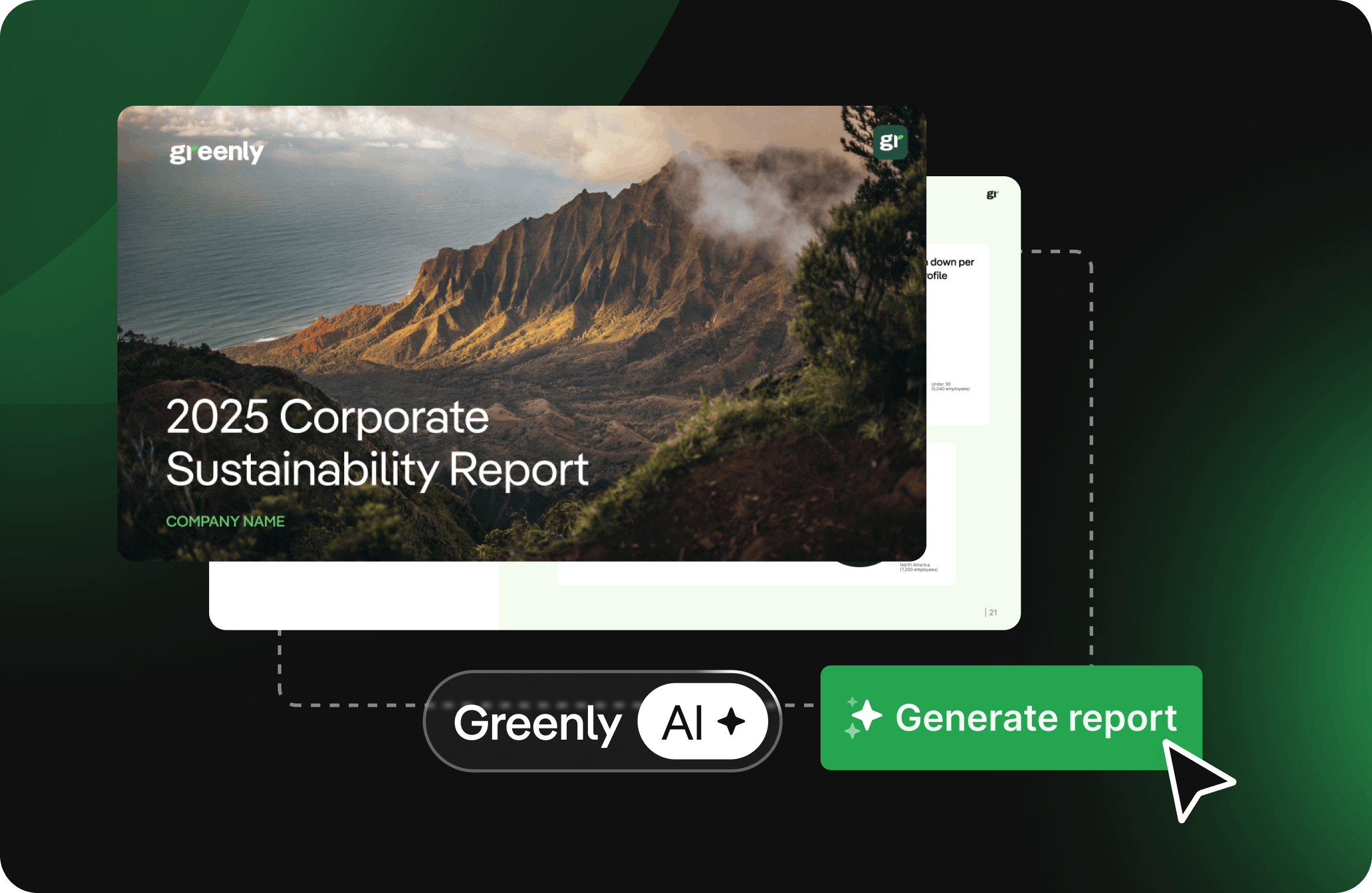ESG Platform
Master Your Product's
Journey from Start to Finish
Empower your team to become Eco-Design experts.
Deliver ISO-aligned LCA in days, not months.

Trusted by over 3,500 Ambitious Climate Leaders worldwide.
The Easiest Way to Report
Under TCFD & IFRS Standards
Greenly’s features are designed to reduce complexity, ensure consistency, and satisfy
investor-grade disclosure expectations.
Leverage GHG Expertise for Precise Emissions Tracking
- Get your a fully automated GHG Report, in line with GHG Protocol and IFRS standards.
- Ensure traceability and audit-readiness with detailed, source-based data.
- Start creating your Net Zero Roadmap with the help of our in-house Experts.

Risk & Opportunity Assessment
- Dynamic dashboards to Identify and quantify transition and physical climate risks
- Connect risks to potential financial impacts across operations and value chains
- Prioritize opportunities and integrate them into strategic planning.

Future-Proofing Through Scenario Planning
- Interactive tool to model multiple climate scenarios to evaluate business resilience
- Understand how varying climate pathways impact your financial outlook
- Increase precision with a platform which integrates smart tools & expert guidance

IFRS-Aligned Climate Reporting
- Produce investor-grade IFRS reports with full traceability
- Version-controlled reports with built-in audit trails
- Auto-filled ESG data across +15 frameworks including CDP & CSRD

Book a demo
Why Greenly is the world’s most
adopted climate platform



Your expert. By your side.
A dedicated expert who
understands your sector,
masters your challenges, and
supports you at every step. For
all your questions, our support
is here — simply, effectively.
Meet an expert
Compliant with the World's Top Standards
Full Sustainability Management Solution
Greenly’s expert-designed platform provides a holistic suite of sustainability services from
data collection to reporting, ensuring that you don’t just start strong, but improve
and adapt as regulations evolve.
Establish
- Compliant GHG Assessment
- VSME
Elevate
- Net Zero Strategy
- ESG Report
- ESG Certifications
Expand
- CSRD Compliance
- Sustainable Procurement
Market Leader
- Carbon / Environmental Disclosure
- Net Zero Strategy impact monitoring
Frequently Asked Questions
Have more questions? Check out our complete FAQs in the Knowledge Base, or contact sales to get the answser you’re looking for.
TCFD has now been superseded by IFRS S2 as the global standard for climate-related financial disclosures. However, IFRS S2 was explicitly built on the TCFD framework — meaning its four core pillars (governance, strategy, risk management, and metrics & targets) remain fully embedded. For companies already aligned with TCFD, transitioning to IFRS S2 is straightforward.
IFRS S1 outlines general sustainability-related disclosure requirements, while IFRS S2 has fully integrated TCFD and focuses specifically on climate-related risks and opportunities. Both are issued by the ISSB (International Sustainability Standards Board) and aim to standardize ESG reporting for investors and regulators.
As of 2024, IFRS S1/S2 is mandatory & applies to companies operating in jurisdictions adopting ISSB standards. This includes public and private firms preparing sustainability disclosures for investors, particularly across the UK, EU, Canada, Australia, and emerging markets adopting ISSB.
IFRS S1 requires disclosure of material sustainability-related risks and opportunities and how they affect the company's financial position.
IFRS S2 specifically requires information on:Governance of climate-related risks
Identified climate risks and opportunities
Climate resilience under different scenarios
Metrics and targets used to manage climate risk
IFRS S1 and S2 consolidate and build upon frameworks like TCFD, SASB, and CDSB, providing a global baseline for sustainability reporting. CSRD is broader in scope (covering double materiality and social governance topics), while IFRS focuses primarily on information relevant to investors — particularly climate-related financial impacts. However, Greenly’s ESG App has shared data streams for each ESG framework: no need to re-collect or re-format.
Disclosures must be produced annually as part of your general financial reporting — typically published within the same timeframe as your audited financial statements. Greenly’s platform supports version tracking, collaboration between different teams, and year-on-year comparisons.
Timelines vary based on company size, complexity, and data readiness. Most companies can prepare a compliant report within 6–12 weeks using Greenly’s platform and expert support. Our tools accelerate data collection, emissions tracking, scenario planning, and disclosure drafting.
